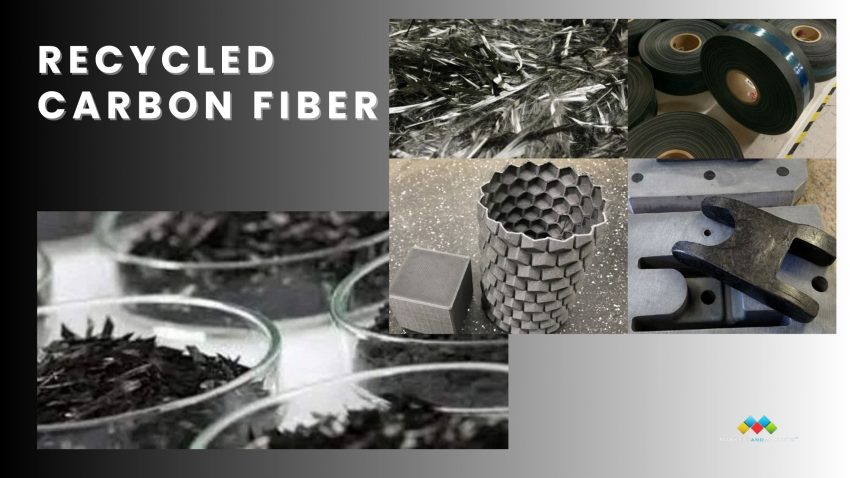In today’s push for greener manufacturing and circular economy practices, recycled carbon fiber (rCF) has emerged as a promising solution. With properties close to virgin carbon fiber—at a much lower cost—it’s catching the attention of industries like automotive, aerospace, electronics, and infrastructure.
The recycled carbon fiber market is projected to reach USD 278 million by 2028, at a CAGR of 10.0%.
Recycled carbon fiber is cost-efficient when compared to virgin carbon fiber. The increasing demand for lighter, stronger, and more sustainable materials is pushing recycled carbon fiber from a niche option into a vital market segment.
What’s Driving Demand for Recycled Carbon Fiber?
Manufacturers across the globe are rethinking their approach to waste, especially as carbon fiber usage continues to rise. Discarded carbon fiber–based components and scrap materials are now being viewed as valuable feedstock rather than waste. The focus on reducing landfill usage, combined with the growing cost of virgin fiber, is contributing to this shift.
One of the biggest growth drivers is the automotive industry’s push for lightweighting—especially in electric vehicles (EVs), where weight directly affects battery efficiency. Recycled carbon fiber is increasingly being used in interior parts, structural supports, and non-critical panels. It offers performance, durability, and affordability all at once.
In aerospace, where weight savings can translate into substantial fuel cost reductions, rCF is finding use in cabin interiors, seat frames, and auxiliary structures. Though not suited for all structural applications, it fills a vital role where strength-to-weight ratio matters, but where ultra-high strength is not required.
Recycling Technologies: How It’s Made
The most widely used method for producing rCF is mechanical recycling, where composite scrap is processed into short, chopped fibers. These fibers are then repurposed into nonwoven mats or thermoplastic compounds. While mechanical processes are cost-effective and relatively straightforward, they often result in reduced fiber length and slight property degradation.
To overcome this, newer thermal and chemical recycling methods are being explored. Pyrolysis, a thermal technique, involves heating composites in the absence of oxygen to burn off resins, leaving behind cleaner carbon fibers. Chemical recycling goes a step further by breaking down the resin chemically, preserving more of the original fiber quality.
Both methods are evolving rapidly, with startups and legacy players investing in research to increase fiber recovery rates and make recycling scalable.
Market Trends:
The pricing advantage of recycled carbon fiber is one of its most compelling attributes. It generally costs 30–50% less than virgin carbon fiber, depending on grade, cleanliness, and processing. This price flexibility opens the door for adoption in price-sensitive industries, including mass-market automotive and consumer goods.
As more OEMs commit to carbon neutrality and sustainable sourcing, they are turning to rCF as a practical alternative to traditional materials. The recycled carbon fiber market is expected to grow steadily, supported by incentives, policies, and rising environmental consciousness.
Automotive and Aerospace: Leading the Way
OEMs in the automotive sector are under pressure to meet strict emissions and fuel efficiency targets. Recycled carbon fiber offers an opportunity to reduce vehicle weight without blowing up costs. It’s already used in underbody panels, brackets, and trim components—especially where durability matters more than load-bearing strength.
Similarly, the aerospace industry is moving toward sustainability goals, integrating rCF into seat components, wall panels, and galley structures. These applications allow manufacturers to lower weight and cost without compromising performance.
A Strong Push Toward Sustainable Composites
The move toward sustainable composites is reshaping how manufacturers view production waste. Rather than treating scrap CFRP as waste, companies are creating closed-loop systems where offcuts and end-of-life products are recycled and reused.
This not only reduces landfill impact but also improves material circularity—an essential element in achieving sustainability certifications and ESG compliance.
Key Players in the Recycled Carbon Fiber Industry
Several companies are taking the lead in scaling rCF production and supply:
- ELG Carbon Fibre (UK) – One of the pioneers in commercializing recycled fiber
- Vartega (USA) – Known for low-cost, clean recovery technologies
- Carbon Conversions (USA) – Focuses on aerospace-grade recycled fiber
- SGL Carbon (Germany) – Developing closed-loop processes with OEMs
- Toray (Japan) – Exploring collaborative innovation in fiber reclamation
These companies are not only supplying rCF but also helping build standards and trust around its performance and use cases.
Looking Ahead: What’s Next?
Innovation in carbon fiber recycling is moving fast. With increasing investments in chemical and hybrid recovery methods, the quality and consistency of recycled fibers will continue to improve. As these methods become commercially viable, they will unlock new markets—ranging from consumer electronics to construction panels and even 3D printing materials.
In the next few years, expect stronger collaboration between manufacturers, recyclers, and OEMs to create more integrated supply chains and establish recycled carbon fiber as a mainstream material of choice.
Recycled carbon fiber market analysis 2025 to 2030- Download PDF Here
Recycled carbon fiber isn’t just an alternative—it’s a smart, sustainable choice for forward-looking manufacturers. With strong demand from the automotive and aerospace industries, improving technology, and a cost advantage that’s hard to ignore, the rCF market is well-positioned for long-term growth.
By combining environmental responsibility with economic efficiency, recycled carbon fiber is proving that high-performance materials can have a second life—and still deliver the results industries demand.

